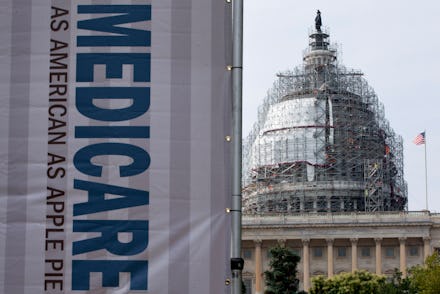Medicare vs Medicaid: The major differences you need to know

Entitlements like health programs Medicare and Medicaid don't always get a great rap: Along with Social Security, the programs use up nearly half of the federal budget.
That's one reason why the GOP has eyed entitlement reform for decades, even succeeding in getting a bill that would replace Medicaid through Congress in 1995, though it was eventually vetoed by President Bill Clinton.
The main reason why these programs are so hard to reform is that they are how the country takes care of vulnerable people: 91% of the dollars spent on entitlement programs in 2010 went to people who were elderly, had disabilities or were a member of working households who logged at least 1,000 hours a year.
Taking away healthcare or prescription drugs from the poor and the elderly isn't exactly a stellar PR move.
If you're a reasonably well-off millennial and don't have a disability, then these programs likely do not apply to you. But their impact is huge: Medicare and Medicaid — the two government agencies that provide health insurance — are used by 15.7% and 16.4% of the population respectively, according to the latest Census data.
And yet, despite their significant role in providing health and medical care to vulnerable Americans, these programs are in trouble. On one hand, our population is getting older. That means fewer people paying into these programs with taxes and more people who require them.
There are also concerns about what sort of stewardship the programs will get under President-elect Donald Trump's choice of Health and Human Services secretary, Georgia Rep. Tom Price, who has proposed reforms to the programs that some worry would loosen patient protections.
With Congress and the White House under GOP control, major changes to the programs could be on the horizon.
Here's what you need to know.
Medicare is for people who might have trouble working.
Both Medicare and Medicaid were signed into life in 1965 by then-President Lyndon Johnson.
Medicare was initially just for Americans 65 and older, and the first enrollee was actually former President Harry Truman, a symbolic gesture as he was the first president to propose some sort of national health insurance. When it went into effect in 1966, roughly 19 million people enrolled.
Since then, other groups have been included in Medicare and other benefits have been added. Now, the program is specifically available to people above age 65, younger people with disabilities, and people with end-stage renal disease.
For those people, Medicare covers hospital insurance, medical insurance and, since 2003, prescription drugs.
Medicaid is for people who work, but still can't afford health insurance.
Medicaid is a collaboration between the states and the federal government to provide health insurance and other benefits to people who can't afford it.
Most states offer Medicaid to people below the poverty level, which in 2016 was $24,300 a year for a family of four.
In some cases, people can also qualify for Medicaid even if they are above the income thresholds but have an expensive medical condition, a process known as "spending down."
You can figure out if you qualify for Medicaid by calling your local office.
Medicaid is partially run by the states. Medicare is not.
Aside from whom they cover, a separate distinction between the two programs is the way they're paid for.
The bill for Medicaid gets split between the states and the federal government, depending on how many people need it. The poorer the state, the bigger the payout from the federal government.
That, coupled with the fact that Medicaid recipients are also more likely to live in rural areas, has people worried that Trump's proposed overhaul to Medicaid could end up reducing coverage for many of the very same people who supported him.
The concern is that re-working the program so the government gives "block grants" to the states — as opposed to meeting the state's needs as they rise and fall — states will be left with shortfalls that necessitate cuts to coverage.